By Jacob L. Wright, Associate Professor of Hebrew Bible at the Candler School of Theology, Emory University
Why didn’t the biblical authors present a more flattering image of King David, and why did they make his stories so complex?
In his 1943 biography of King David, the British diplomat Alfred Duff Cooper, 1st Viscount Norwich, insisted that the biblical account of this figure must be factual. Why? Because no people would invent a national hero so deeply flawed.
Many biblical scholars agree with Cooper that the David accounts are thoroughly historical. Yet they come to this conclusion from a very different starting point. Reading with Shakespearean suspicion (“the lady doth protest too much, me thinks,” Hamlet III.2), they notice that biblical authors go to great lengths to demonstrate David’s innocence. He is, according to their account, not in the ranks of the Philistine armies when Saul and his sons die in battle on Mount Gilboa. To the contrary, he is deeply grieved at the news of their death, executing the messenger who conveys it, rending his garments in anguish, fasting, and teaching a dirge to his fellow Judahites.
If the biblical writers protest with such force that David was blameless – so it is argued by these scholars – they must have completed their accounts during David’s lifetime or soon after his death. Thus they insist that to understand the narratives properly, we must interpret them as an apologia pro vita sua (a defense of his life), composed in the court of David or his successor Solomon.
This approach seems reasonable enough, and the best, and often replicated, example of it was set forth by Baruch Halpern’s brilliant David’s Secret Demons, 2001. The problem is that one must also explain texts that are blatantly critical of David.
Imagine that the Davidic court, in the reign of Solomon or shortly thereafter, had commissioned a cadre of scribes to compose a majestic portrait of David’s life. One of their tasks would have been to vindicate his conduct vis-à-vis Saul’s household. Would these scribes have ever thought to submit a work to their royal patron that contained a raft of passages describing David’s raw ambition and ruthlessness? Had they done so, they would have rightly feared for not only their livelihoods but their lives. But precisely these kinds of texts are what we have in the books of Samuel and Kings.
David’s biblical biography doesn’t just fail to proffer a sufficiently positive portrait. It even includes portions that depict him mistreating Saul’s family. Take, for example, his brusque treatment of Saul’s daughter Michal in 2 Samuel 6, and who, the authors add, died childless. Even more telling is the account in 2 Samuel 21, where David appeases the Gibeonites by allowing them to slaughter, in the most barbaric manner, seven of Saul’s descendants. Only when Rizpah, Saul’s concubine, refuses to relent from her public protest does David take it upon himself to do something favorable for Saul’s house.
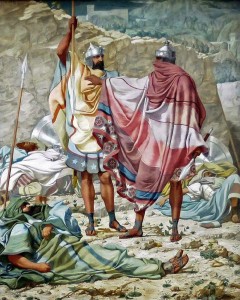
Richard Dadd, David Spares Saul’s Life,1846.
To be sure, one cannot deny the presence of passages in the Book of Samuel that exonerate David’s name. They underscore either his solicitude for Saul’s house or his moral ascendancy over his royal predecessor. However, these texts likely emerged long after David’s death. They are easier to understand as part of the ongoing rivalry between the independent states of Israel and Judah. David represents the kingdom of Judah, and Saul the kingdom of Israel. By affirming that the founder of their dynasty was the divinely chosen, martially superlative, and morally superior successor to Israel’s first king, the Davidic rulers of Judah invite the population of Israel to join them and submit to their rule.
The number of passages that fall into this category is relatively minimal. What remains are two different types of texts: 1) those that articulate a penetrating critique of royal power and statehood, and 2) those that treat issues of status and belonging in Judahite society.
Anticipating Shakespeare’s work, circles of Judahite authors took the greatest ruler in their collective memory and made him the most profoundly human of all biblical personalities. Their move is a radical one: According to ancient conventions, monarchs were represented as stoic, immutable, superhuman sovereigns.
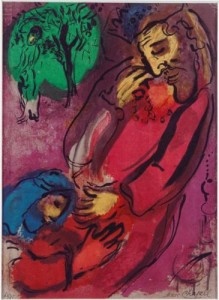
Marc Chagall, David and Absalom, 1956.
In their efforts to unmask royal rule, the biblical writers produced a parable of power that probes new biographical depths. The David they created is both larger than life and “human, all too human” – which is undoubtedly why he has long been cherished. His story reveals uncomfortable truths about ourselves as readers. But it also displays a stupefying faith that impels an underdog to set his sights on unthinkable heights of glory. As they wrestled with the realities of passion and power, these writers affirmed the resiliency of the human spirit. Unprecedented triumphs must contend with mortality, fragility, and failure. “Oh how the mighty have fallen!”
But the David story does not only explore what it means to be human. Its larger goal pertains to collective political life. Faced with catastrophic defeat and the loss of statehood at the end of the Iron Age, the biblical authors set about the task of imagining a new kind of political community, one that can withstand conquest by imperial armies -“nationhood” or “peoplehood.” As part of their project, they lay out, in a nuanced historical narrative, the pros and cons of centralized monarchic rule. And they situate this experience of statehood in the history of a people that long antedates it and that survives its demise. In this account, running from Genesis to Kings, the complex and moving story of David’s ambitions, triumphs, and devious schemes is the pivotal turning point, marking the rise of a centralized state in Israel’s history. That history ends with the destruction of everything that David and Solomon had created. What endures however is a people – Judeans, on a path to becoming Jews.
Closely related to the accounts of David’s ambitious personality is a second group of texts that treats questions of belonging and status within Judahite society.
In my ten years of teaching, I’ve often heard students complain about the number of details the biblical authors include in their narratives – names of various figures, their parents’ names, the places where they come from, and so on. And the students have good reason to complain: Although the David story in the books of Samuel and Kings is lengthy by biblical standards, it comprises only a small fraction of the pages in a modern novel. Yet the number of characters in Tolstoy’s War and Peace is not much larger than the number of figures in the David narrative!
Why is that so? Didn’t the biblical authors realize their stories would have been much easier to read if they had focused on the plot and kept the particulars to a minimum? Their proficiency in this regard is brilliantly demonstrated in such popular tales as the story of David slaying Goliath or the saga of his affair with Bathsheba.

James Tissot, David Sees Bathsheba Bathing.
To explain the profusion of detail in the less popular David accounts, many scholars argue that the accounts would have had to have been written contemporaneously with the events or shortly thereafter. Yet their conclusion fails to account for various considerations. For example, these stories were read, transmitted, and expanded long after David’s death, which means that readers from much later times deemed them to be highly relevant to the issues they faced. A more sustainable explanation for the superabundance of details begins by considering the political struggles that persisted in Judahite society for the many centuries of its existence, both before and after the cataclysmic conquest of the kingdom in 586 BCE.
The biblical authors were concerned with the privileges, honors, and authority enjoyed by groups in their society (villages, towns, regions, families, clans, professional guilds, etc.). One common way they address these matters is to report how a representative individual or group assisted or remained loyal to David when the armies of Saul and Absalom sought to destroy him and his followers. These memories have direct implications for the privileges and status enjoyed by the contemporary descendants of that group.
The phenomenon can be widely witnessed in the various ways political actors use war commemoration to negotiate membership, rights, honors, and entitlements in their societies. Many biblical texts do the same by appealing to memories of momentous battles and war efforts, ranging from Israel’s conquest of Canaan to the defeat at the hands of the Babylonians. Think here of the account of Jael helping Israel conquer their Canaanite enemy (Judges 4–5). Jael represents the Kenites, a population that was not considered to be full members of Israel. By commemorating her valor, the biblical authors furnished support to those who insisted that the Kenites had a long history of loyalty to Israel.
So why did the authors of the books of Samuel, Kings, and Chronicles use David for this purpose? Because they were Judahites, and David is the most beloved figure in Judahite tradition, founder of the kingdom of Judah. By claiming a group assisted or betrayed Judah’s iconic hero during this critical period in its history, biblical authors make a powerful case for or against that group in contemporary Judahite society. Seen in this light, we can understand why the David narratives are teeming with such a confusing array of figures and place names.
Thus the books of Samuel and Kings contain very different types of David accounts. The agendas of their authors, in many ways, compete with each other. Some affirm that David and his line are chosen by Israel’s God to rule the nation. Others, however, are concerned with the nature of power and statehood per se. In their evaluation, they dissect the figure of David, depicting his ambitious and ruthless abuse of power. Yet even as they are at variance with one another, their combination makes David an exceptionally complex personality. It is this complexity that predestined him to a long and vibrant afterlife.
Jacob Wright is Associate Professor of Hebrew Bible at the Candler School of Theology, Emory University. He is the author of King David and His Reign Revisited, which is available as a special enhanced ebook from iTunes. A print version was published in Maywith Cambridge University Press. He is also offering an open-access Coursera course on the Bible.
~~~
All content provided on this blog is for informational purposes only. The American Schools of Oriental Research (ASOR) makes no representations as to the accuracy or completeness of any information on this blog or found by following any link on this blog. ASOR will not be liable for any errors or omissions in this information. ASOR will not be liable for any losses, injuries, or damages from the display or use of this information. The opinions expressed by Bloggers and those providing comments are theirs alone, and do not reflect the opinions of ASOR or any employee thereof.
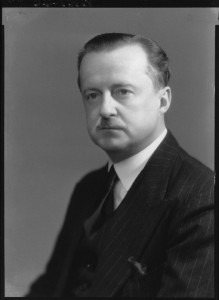
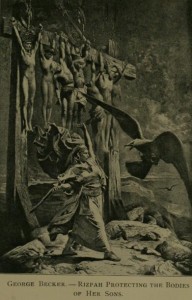
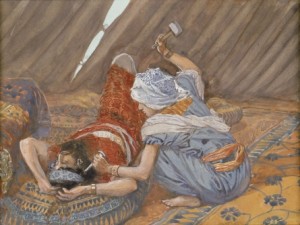
Do you want a bot? Or do you want the user to be able to login using their twitter credentials? For the first one, you need your tokens. For the second, you need users’.